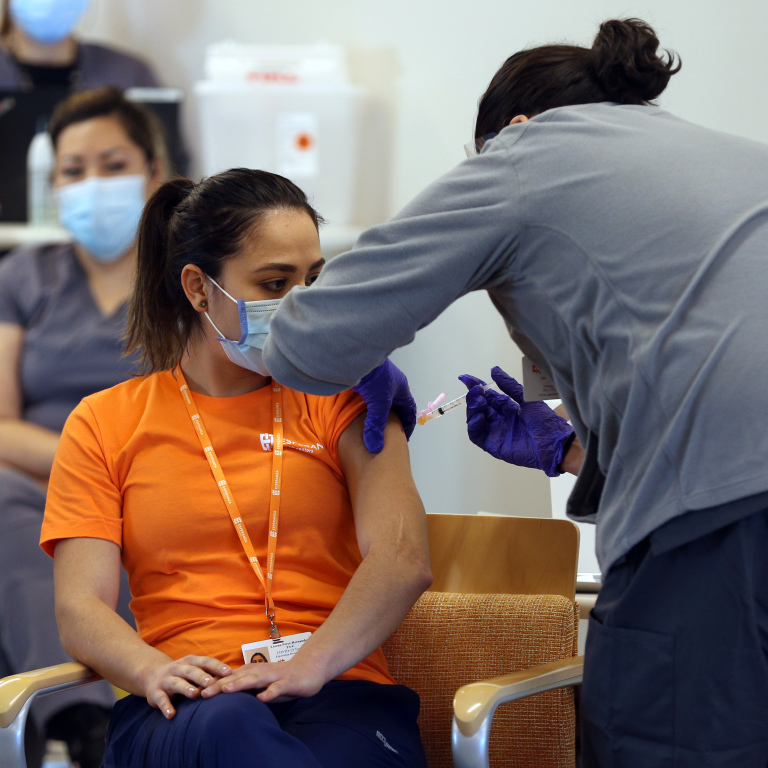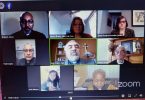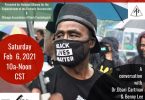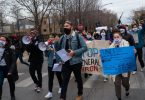Instead of relying on people to seek out information about vaccinations, the city will work to bring that information — and doses — to West and South side neighborhoods as part of its new Protect Chicago Plus program.
CHICAGO — Coronavirus vaccinations have lagged among Black and Latino Chicagoans — even though those populations have seen more deaths and cases of COVID-19.
But the city has a plan to change that, hoping to target vaccine doses and information to 15 South and West side neighborhoods hit hard by COVID-19. That plan, dubbed Protect Chicago Plus, will ramp up and spread to more neighborhoods in coming weeks, as the city is now allowing more community members — namely, frontline workers and people 65 and older — to be vaccinated.
More than 140,000 vaccines have been administered in Chicago. Data on race and ethnicity is still lacking, according to the city, but officials estimate about 53 percent of those vaccinated in Chicago are white, 14 percent Asian, 15 percent Black and 17 percent Latino. About 7 percent of people’s race or ethnicity was unknown.
There has been an “unexpectedly low number of Black and Brown Chicagoans [who] have taken the vaccine so far,” Mayor Lori Lightfoot said during a Monday news conference. “A percentage that is so alarmingly low, that if we do not reverse this trend, we will continue to see more Black and Brown [people] die of this virus when a vaccine is right here, right now, for free for all.”
Though Latino and Black people have gotten fewer vaccine doses so far, they’ve been hit the hardest by COVID-19.
About 30 percent of Chicago’s residents are Latino and 30 percent Black, but about 45.75 percent of Chicago’s confirmed COVID-19 cases were in Latino people and 22.3 were in Black people in cases where a person’s race was known. About 38.7 of the city’s COVID-19 deaths were among Black people and 33.9 percent among Latino people.
In comparison, about 30 percent of Chicago’s residents are Latino and 30 percent Black.
And of Chicago residents who have been vaccinated, people tend to live on the North Side or in the Downtown area.
“Our city is about two-thirds people of color, and yet we are falling woefully behind in the number of people of color who have been vaccinated to date,” Lightfoot said. “Those are numbers that simply cannot stand.”
Part of the disparity is because the city has first focused on vaccinating health care workers, officials said.
In that group, “diagnosing officials,” like doctors and nurses, were more likely to opt to be vaccinated — and members of that group are more likely to be white and to live in central Chicago or on the North Side, said Dr. Allison Arwady, head of the Chicago Department of Public Health.
Technicians, like ultrasound technicians and physical therapists, are more evenly distributed across the city, but they were less likely to choose to be vaccinated, Arwady said.
And support health care workers, like dental assistants and home health aids, are “much more likely” to live on the South and West sides and to be Black and Latino, but they were less likely to choose to be vaccinated, Arwady said.
“Certainly we have seen a combination of more immediate interest from people who are, frankly, white and Asian … being most willing to first raise their hand,” Arwady said during a call with reporters.
Arwady said part of that is because public health has a history of racism, creating distrust among communities of color. And there’s ongoing disparities in health care, she said.
Lightfoot emphasized the vaccine is safe for all people. She was publicly vaccinated during the news conference.
The city will keep working on getting health care workers of color vaccinated even as starts allowing others to get doses, Arwady said.
“It doesn’t surprise me there is some more hesitation among those groups, and it’s why we think it’s so important to continue to work on health care workers,” Arwady said.
But as the campaign opens up to more people, the city wants to bring communities of color information — and doses — rather than wait for them to seek it out. Officials hope doing that can remove the barriers that keep people from being vaccinated, which will lead to more Black and Latino Chicagoans choosing to get the shots and be better protected from COVID-19.
As part of the programs, city officials will spend about two weeks planning how to implement the program in each neighborhood, working with community and faith leaders, Arwady said.
They’ll then spend six to eight weeks in those communities, raising awareness and teaching people how to sign up for vaccines, Arwady said.
As part of the program, the city will host vaccination events in partnership with aldermen, social service agencies and faith communities. The city will also have outreach teams and community health workers who will go door to door and be present in popular businesses — like groceries and laundromats — to share information about vaccines and help people make appointments to get vaccinated.
These efforts will be focused on communities that have been devastated by COVID-19 and where the residents are most at risk, like communities with many essential workers who can’t stay home to protect themselves.
The city’s plan:
- Target 15 “high-need communities” to ensure a significant part of the city’s vaccine supply is sent there.
- Distribute vaccine doses directly to those communities by partnering with community stakeholders on clinics and “strike teams.” Connect with people who might be disconnected from traditional vaccination administration channels.
- Work with community stakeholders to identify places and groups where vaccinating people will most quickly decrease the risk of COVID-19 being transmitted. Remove barriers to those people being vaccinated.
The neighborhoods the city will target:
- West Englewood
- New City
- Gage Park
- North Lawndale
- South Lawndale
- Chicago Lawn
- Englewood
- Roseland
- Archer Heights
- Washington Heights
- Austin
- Montclare
- South Deering
- Belmont Cragin
- Humboldt Park
Block Club Chicago’s coronavirus coverage is free for all readers. Block Club is an independent, 501(c)(3), journalist-run newsroom.
Subscribe to Block Club Chicago. Every dime we make funds reporting from Chicago’s neighborhoods.
Already subscribe? Click here to support Block Club with a tax-deductible donation.







